Discover Parks & Wildlife contains affiliate links and is a member of the Amazon Services LLC Associates Program. If you make a purchase using one of the Amazon links (or other affiliate links), we may receive compensation at no extra cost to you. See our disclosure policy for more information.
These Gettysburg Battlefield Stops Prove The Past Still Echoes Through The Fields
History buffs and road-trippers, assemble! It’s time to swap that stale audio tour for something a bit more, dare I say, epic. Because it turns out, Gettysburg isn’t just a sleepy little town with a claim to fame from the 1860s; it’s a full-blown masterpiece of history, grit, and, yes, some cannonball-induced drama.
So forget breezing by in your car with one eye on the GPS and the other pretending to care. This is a place that demands your time, attention, and possibly your snack stash (history has a way of making you hungry, right?).
Let’s take a look at some of the battlefield sites that deserve more than just a quick drive-by as you explore Gettysburg. It’s time to pause and truly delve into the past at these poignant historic sites.
Little Round Top
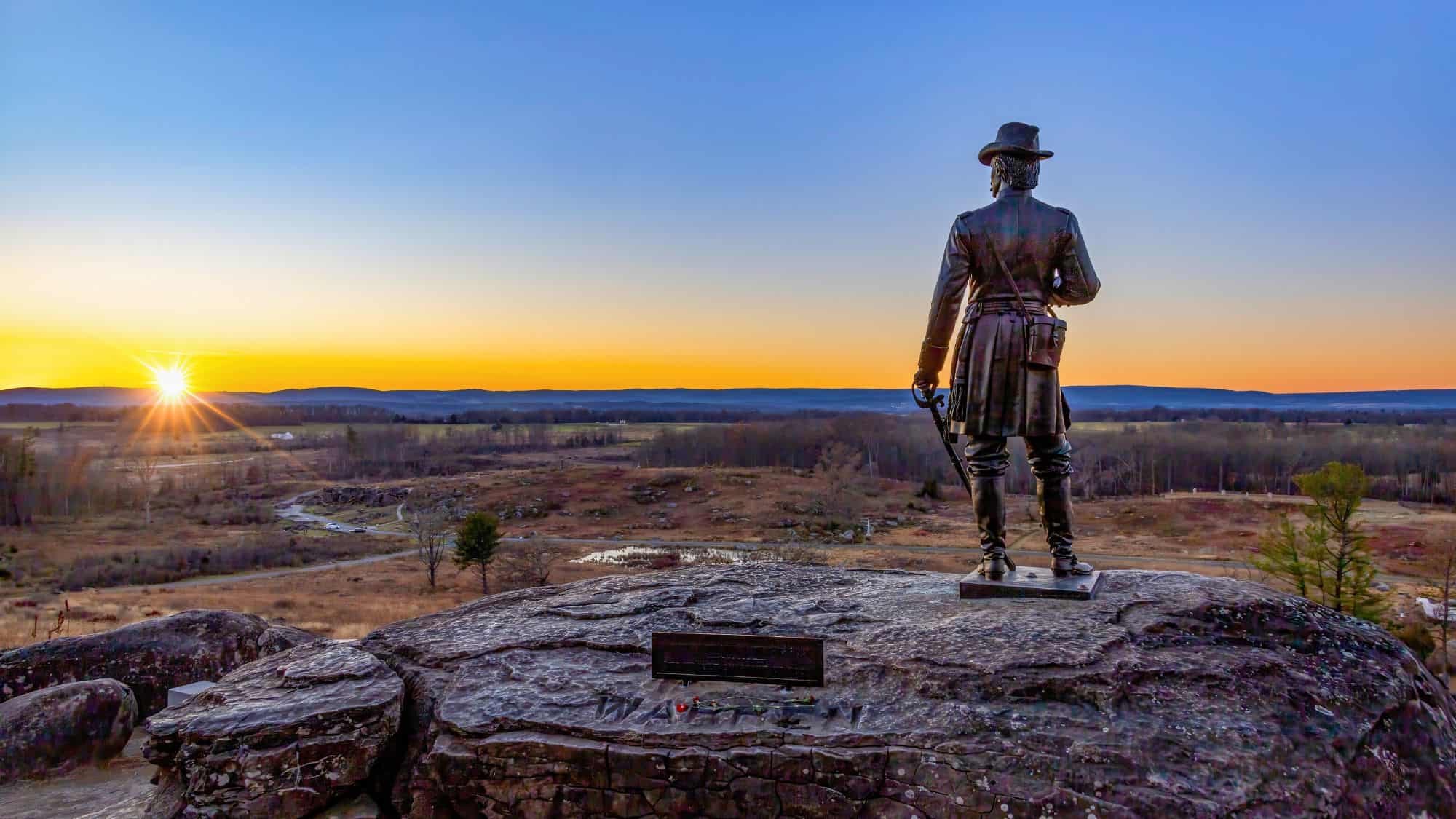
Little Round Top is the stage for one of Gettysburg’s most nail-biting moments. Imagine the 20th Maine holding the Union left flank like it’s a game of tug-of-war meets Chutes and Ladders. Led by Colonel Joshua Chamberlain, these folks pulled off a dramatic bayonet charge to save the day.
Today, you can stand where history got all fired up and take in panoramic views of the trees, hills, and that serene land that was once a battlefield. And while you are at it, picture cannon fire echoing in the distance. Who knew a rock-strewn hill could be so much drama?
Devil’s Den
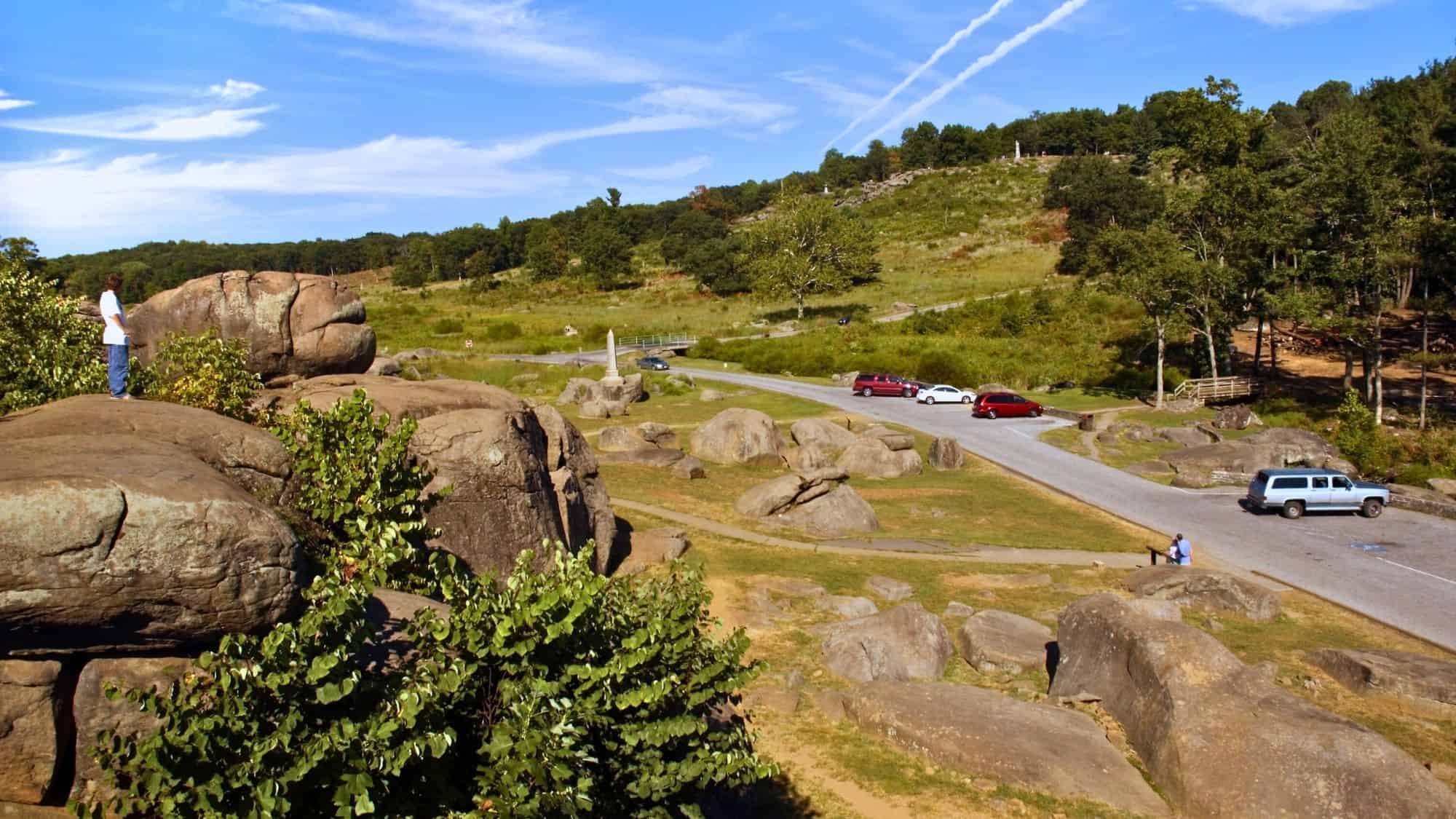
If rocks could talk, Devil’s Den would have a bestseller, complete with war stories and probably a ghostwriter (pun intended). It’s all jagged boulders and winding paths that look like nature’s obstacle course, but back in 1863, it was prime real estate for sharpshooters. Fierce fighting, sniper’s nests, and instant infamy.
Stand here today and marvel at the giant rocks that somehow manage to be both majestic and eerie (and that doesn’t include the ghosts hanging around). Plus, you get to say, “I went to a place literally called Devil’s Den,” which sounds like the opening line of a gothic novel.
The Wheatfield
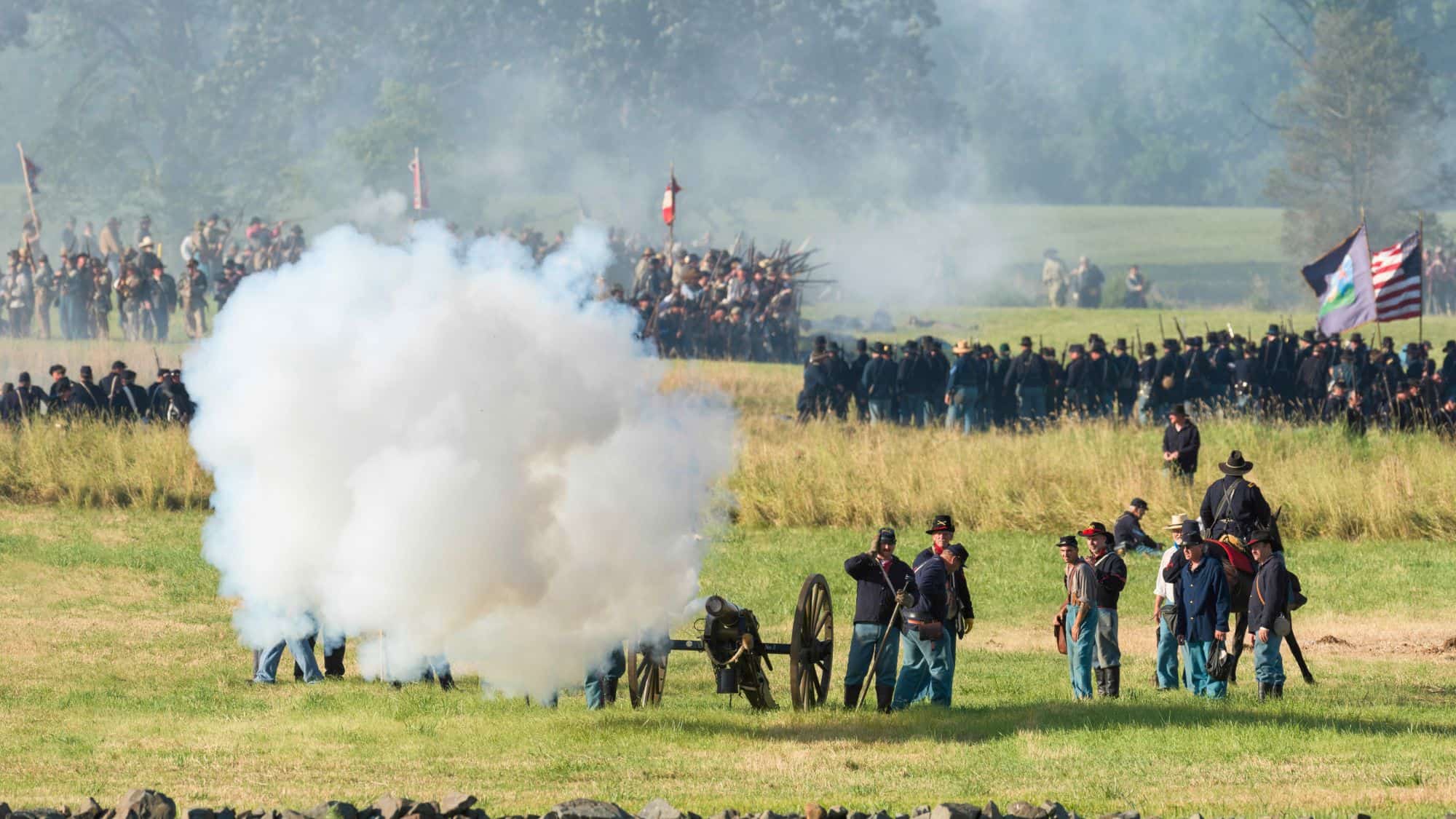
Don’t be fooled by the peaceful swaying grain; ask any Civil War historian, and they’ll tell you the Wheatfield was one giant blender of chaos. Nearly 6,000 soldiers became casualties here in bloody see-saw combat that changed hands six times. SIX. That’s more turnovers than a bad bakeoff.
Today, it’s hauntingly picturesque, perfect for contemplating life or wondering how a bucolic patch of earth could once be a war zone. And yes, you will try to figure out why it’s just called “the Wheatfield” as if that’s at all descriptive of its history.
The Angle
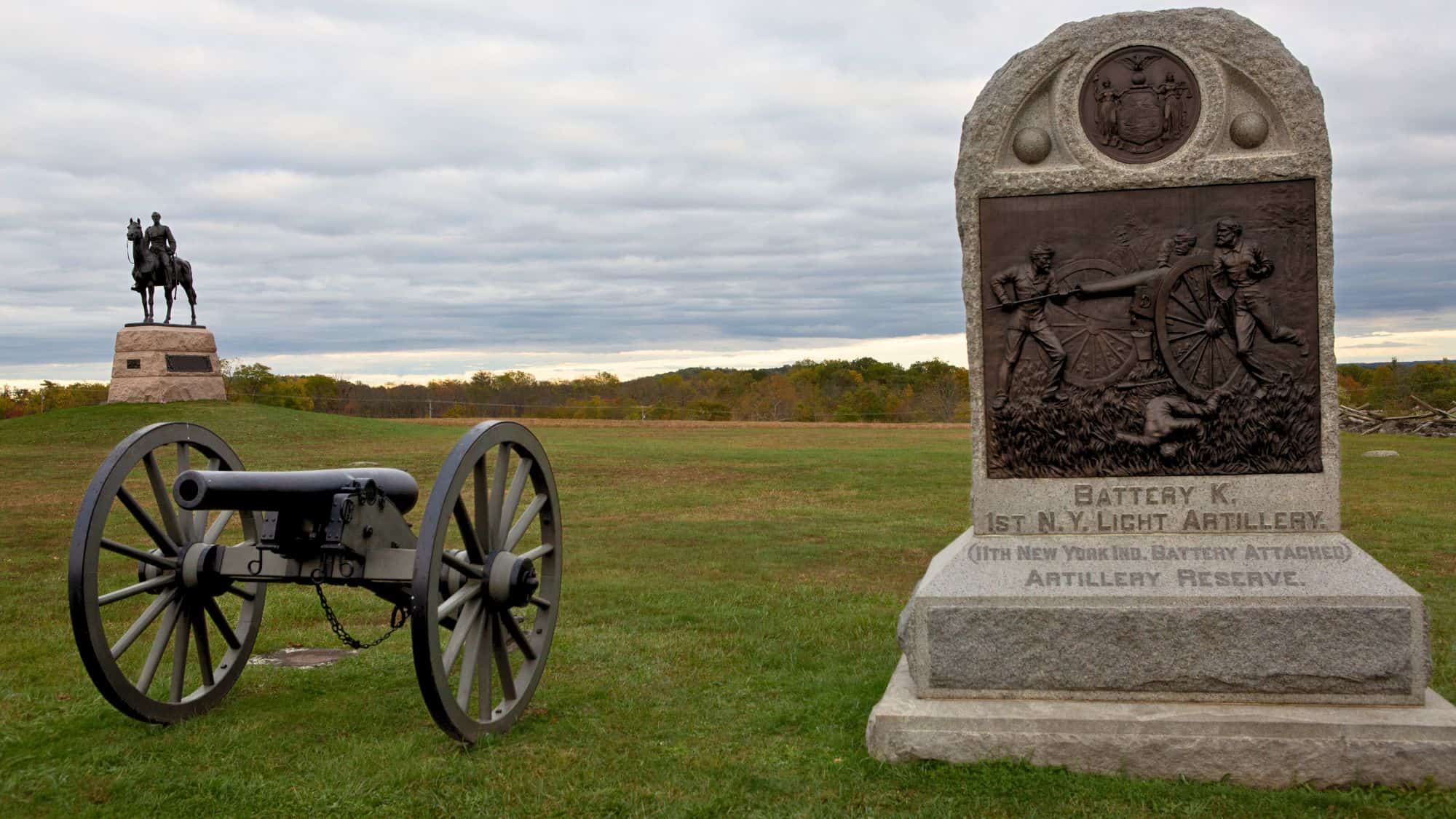
The Angle is where Union troops faced Pickett’s Charge and basically said, “Not today.” It’s the so-called “High Water Mark of the Confederacy,” which is fancy for “this is where the Confederate advance peaked, and then things went downhill fast.”
Standing here, you can practically hear the collision of muskets and cannon fire (or maybe that’s just the tour guide getting carried away). Be sure to snap a picture of the stone wall; it’s an unsung hero in this epic clash.
The Peach Orchard
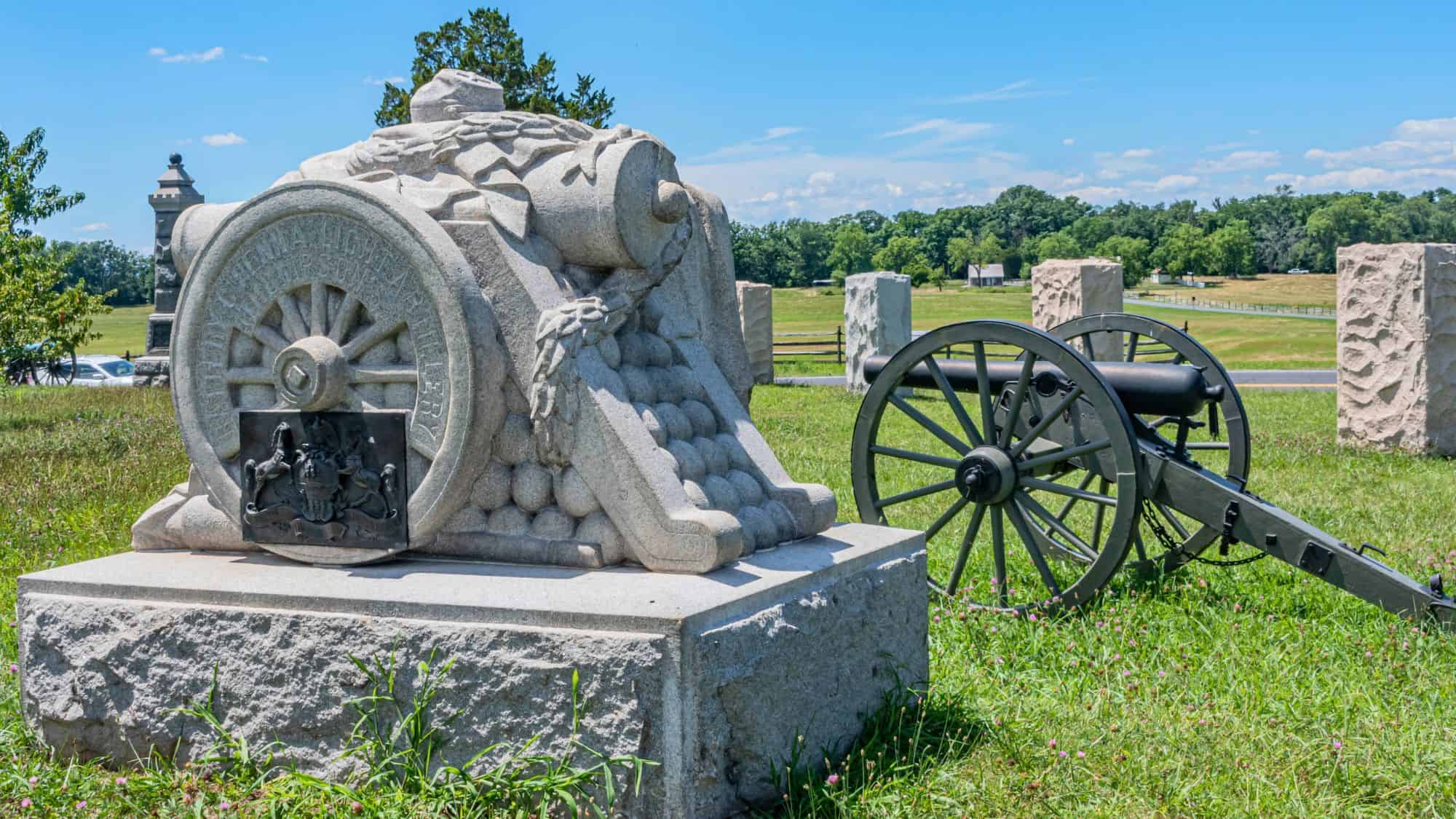
Name a juicier spot for some second-day drama… I’ll wait. The Peach Orchard is where artillery played the loudest, most chaotic game of Battleship you can imagine. The Confederates launched attacks; the Union fired right back, and somewhere in the middle, an orchard became shrapnel central.
Today, it’s just as serene as you hope to feel after dodging family drama at a reunion. And you’ll even still see peaches growing nearby, though their ancestors probably witnessed more cannonballs than sunlight. It’s a tasty, historical paradox worth pondering (and yes, you’ll immediately crave fruit).
Virginia Memorial
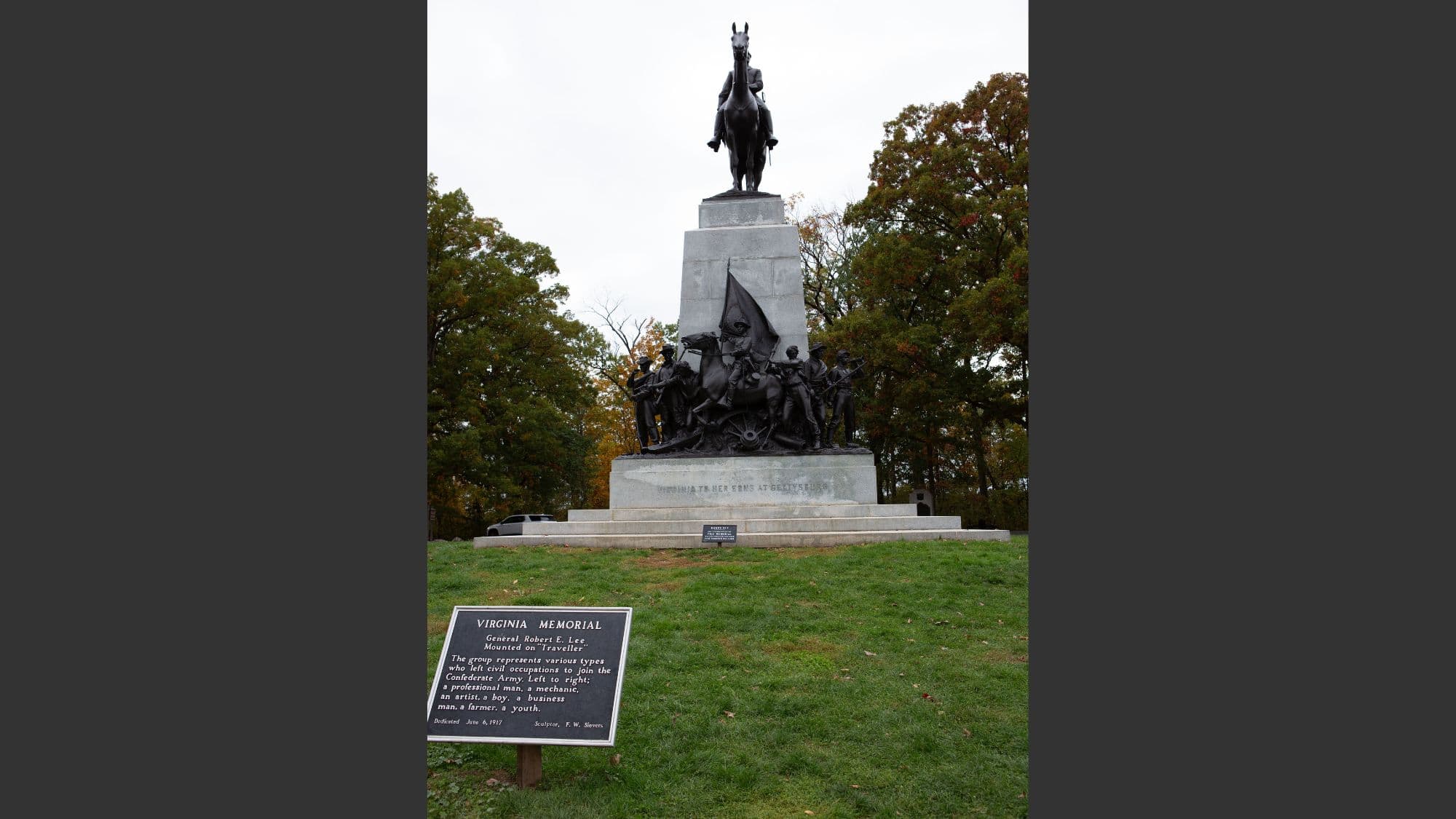
There it is, towering on Seminary Ridge like a stern-faced guardian of Confederate hopes, the Virginia Memorial. This iconic monument stands as both a tribute to those who fought for the Southern cause and a reminder of the wild gamble that was Pickett’s Charge.
Robert E. Lee confidently oversees the fields, while you, standing comfortably on modern pavement, ponder why anyone thought charging across that terrain was a solid idea. The memorial itself is imposing and grand, but the real kicker? The view of the battlefield below, where history was made.
Culp’s Hill
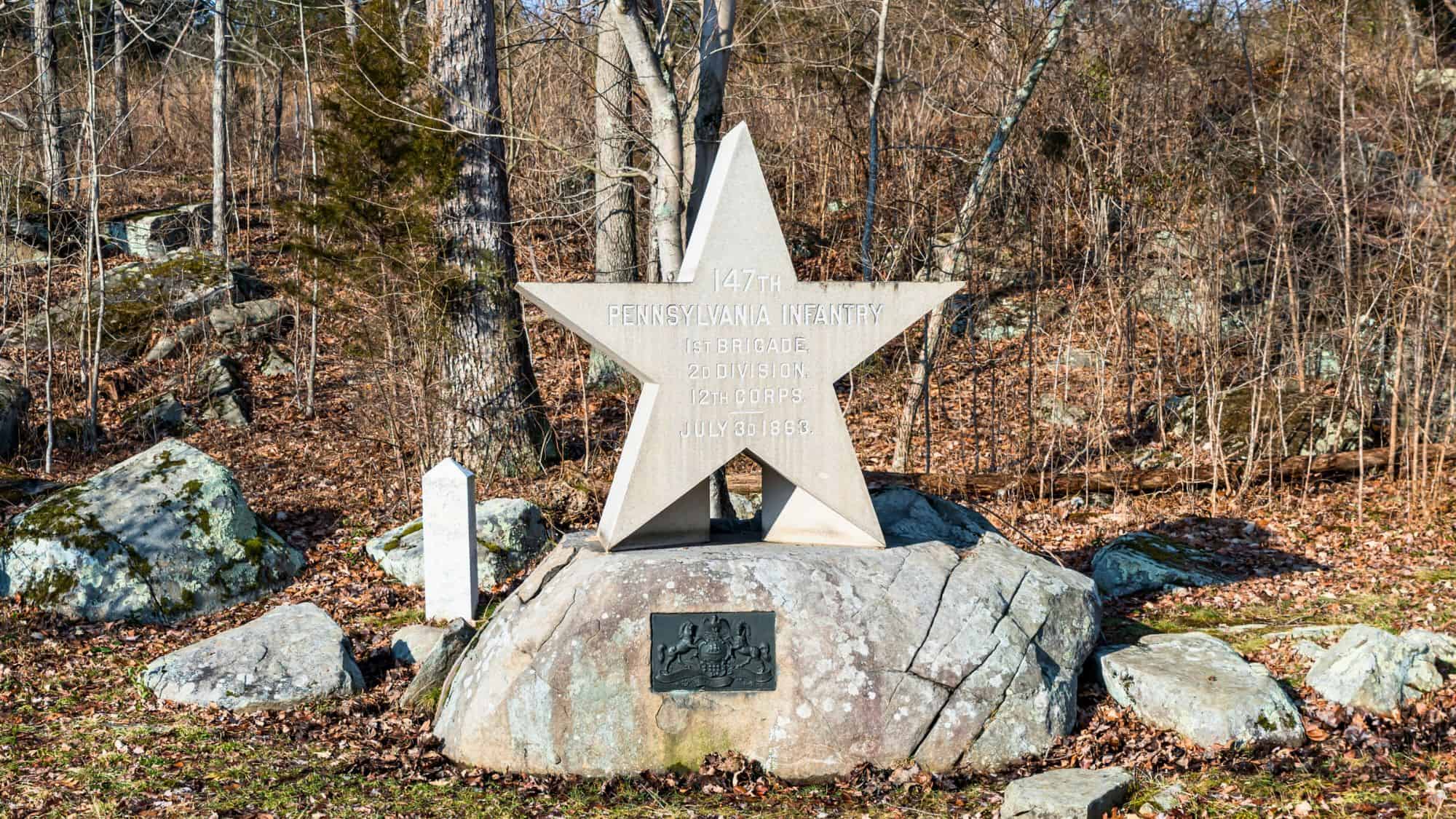
Culp’s Hill is where dense woods meet dense decisions. This forested stronghold became a chaotic arena for skirmishes over two days as the Union desperately defended its right flank. Imagine the scene: soldiers stumbling over roots and firing blindly through the trees, while the hill itself loomed like an umpire presiding over the madness.
Located southeast of Gettysburg, it provided a tactical advantage that Union forces weren’t about to hand over. Walking here today, you’ll hear the rustle of leaves and maybe feel the ghosts of soldiers muttering about how climate-controlled tanks would’ve been a game-changer.
Seminary Ridge
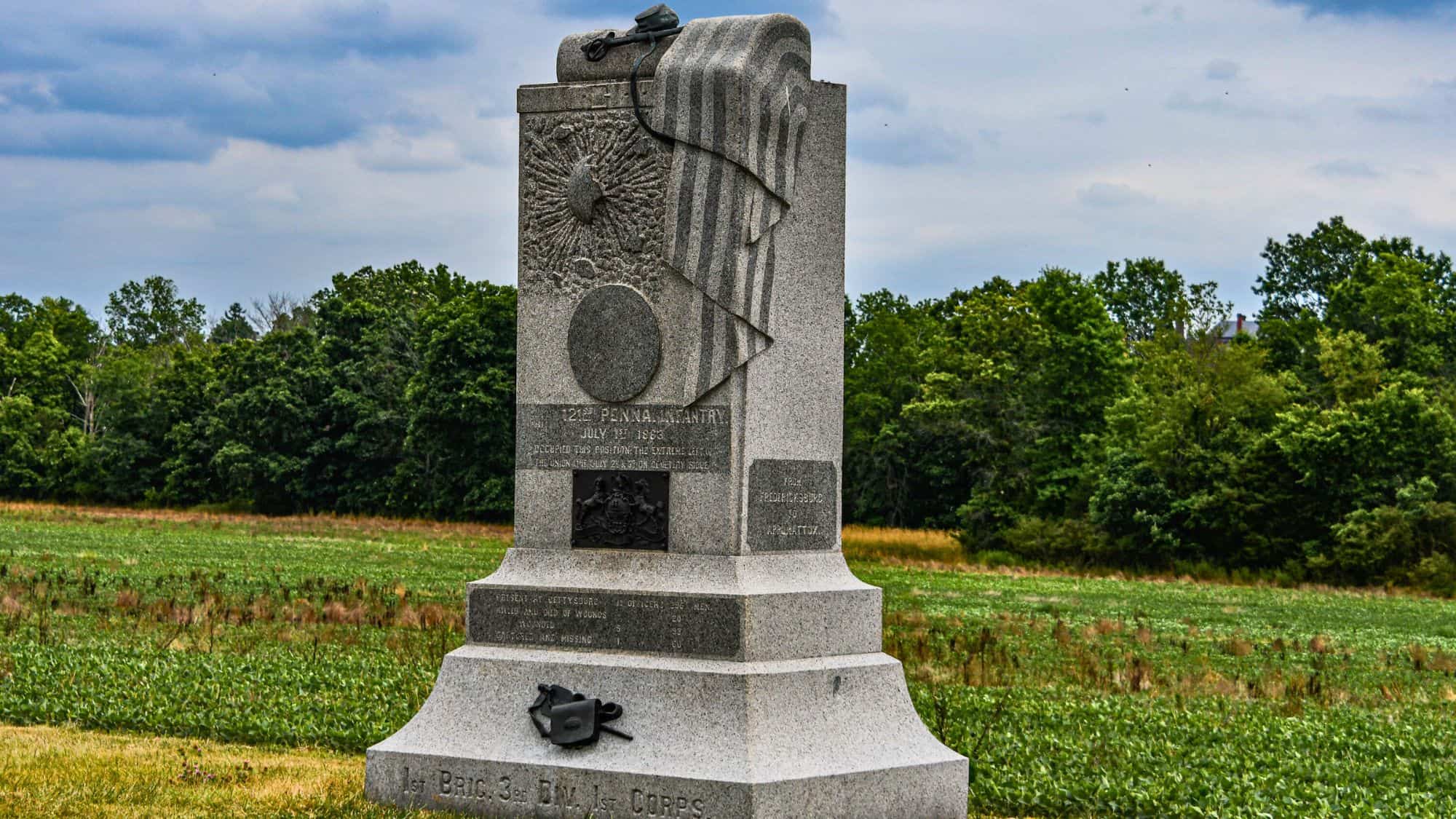
Step onto Seminary Ridge, where Confederate forces defiantly set up their lines, and you’ll wonder if they missed the memo that Union cannons existed. The ridge offered decent views of the battlefield, though we’re not sure anyone appreciated the scenery with artillery firing left and right.
Wander the pathways, admire original structures like Schmucker Hall, and inhale the crisp air as you wonder how people functioned in wool uniforms during July.
Eternal Light Peace Memorial
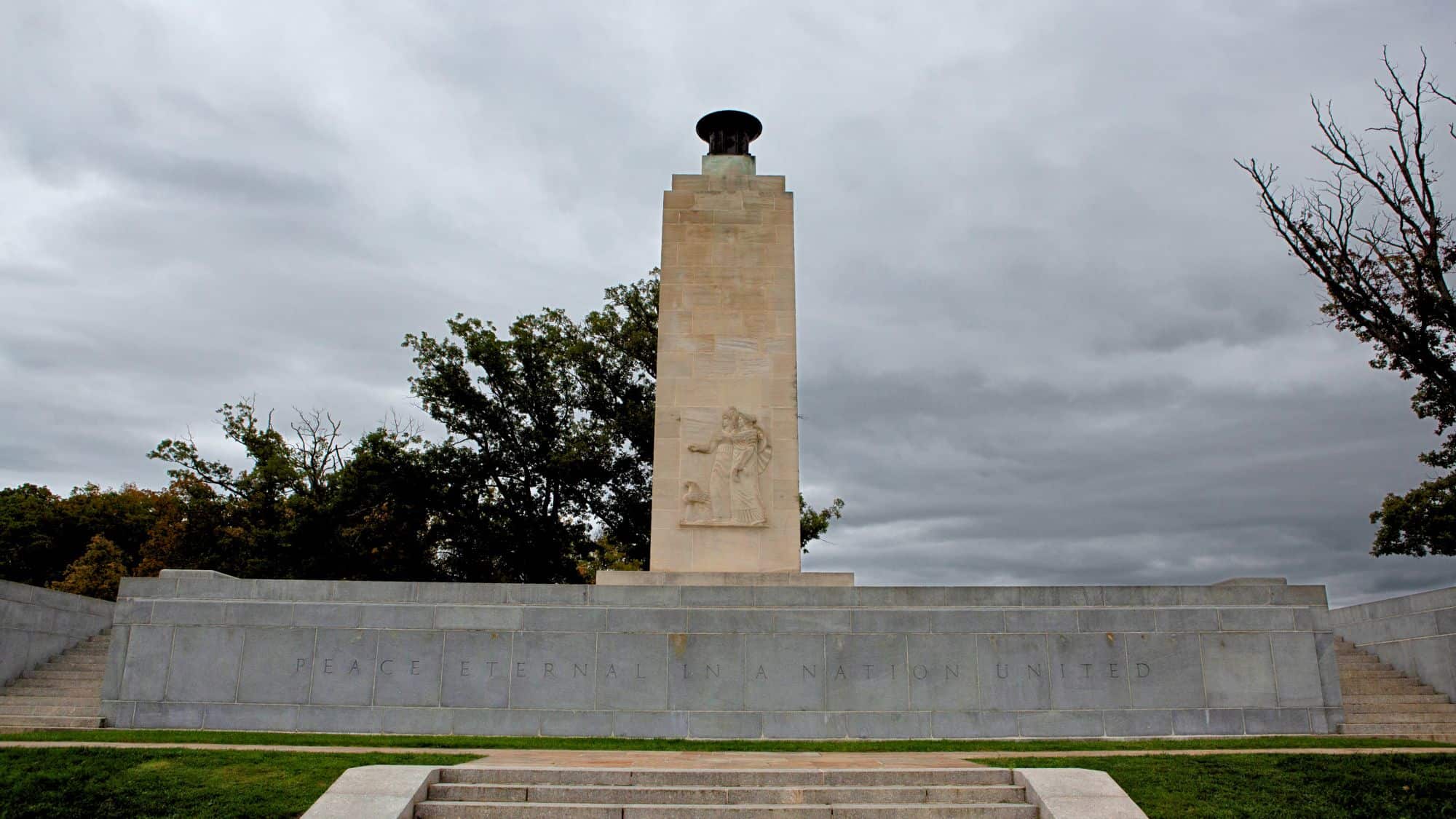
This one’s a beacon of reconciliation. Built in 1938, the Eternal Light Peace Memorial brings together the memory of Union and Confederate sacrifice under one perpetually burning flame. Think of it as Gettysburg’s eternal nightlight, symbolizing unity between the once-divided sides.
Sitting atop Oak Hill, the memorial offers gorgeous panoramic views you didn’t know you would find in such a somber place. And if you’re there at sunset, the golden light turns the landscape into a historical postcard. It’s also a great spot to reflect on how far we’ve come (or how petty arguments pale in comparison to, you know, actual civil war).
Pickett’s Charge Field
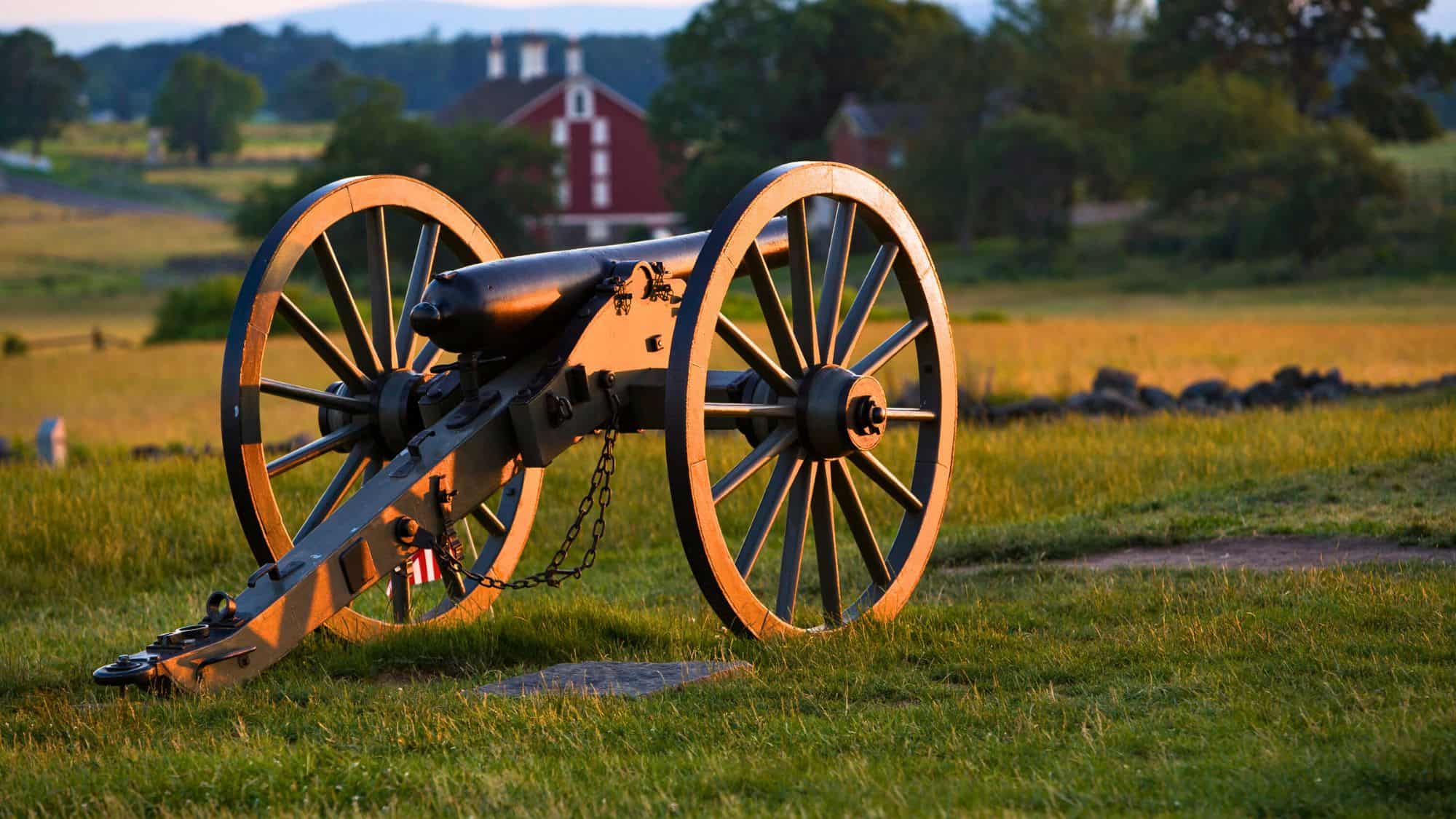
Okay, so imagine you’re a Confederate soldier about to charge across a mile-long open field while Union cannonballs tear through the air like angry hornets. Sounds fun, right? That, friends, was Pickett’s Charge on July 3, 1863. The results? About as predictable as spilling ketchup on a white shirt.
Exploring this field today, with its tranquil grass and chirping birds, is a surreal experience. The only charging you’ll likely do is to your phone as you check Google Maps to spot the High Water Mark. It’s a humbling and sobering experience (and a far cry from the chaos of cannon-fire and musket balls of the past).
North Carolina Memorial Area
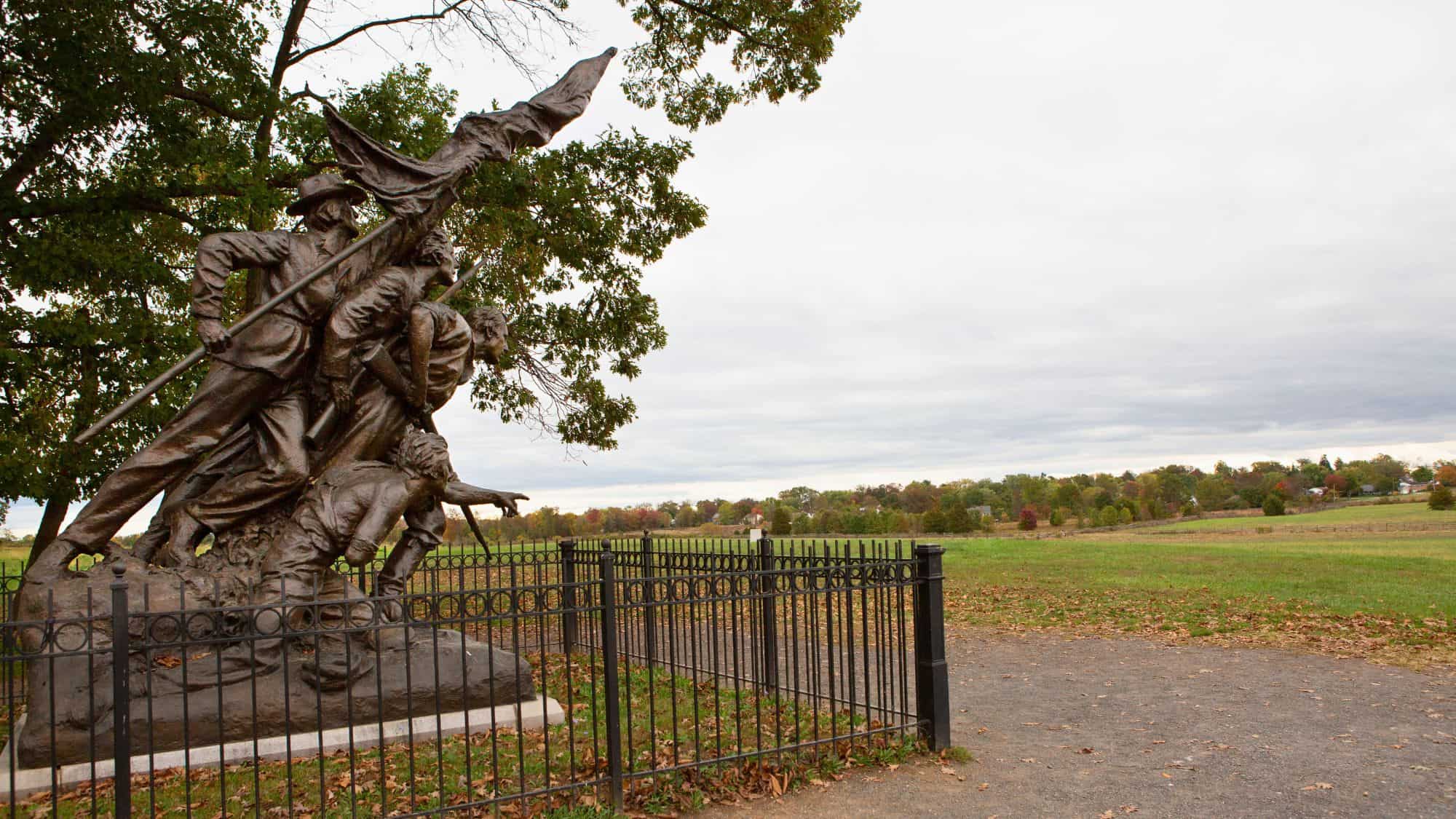
Situated beneath a canopy of quiet trees, the North Carolina Memorial Area is equal parts poignant and powerful. The sculpture (a striking image of soldiers helping each other forward) speaks volumes about camaraderie and sacrifice. Pause here, amidst the shaded trails, to contemplate what it meant to risk everything for a cause.
Located near the Confederate front line of Pickett’s Charge, it’s a peaceful escape that might tug on your heartstrings (or at least make you grateful to live in less combustible times). Bring your thoughts, respect, and comfy shoes. War, thankfully, not included.
Like Our Content? Make sure to join our newsletter for all the latest on outdoor adventures (and a FREE STARGAZING GUIDE). Click here to sign up!






